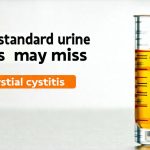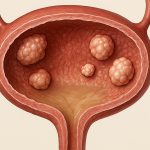Interstitial Cystitis (IC), now more accurately termed Bladder Pain Syndrome (BPS) due to its multifaceted nature, presents a significant challenge in urologic care. It’s characterized by chronic pelvic pain, urinary frequency and urgency – symptoms that profoundly impact quality of life for those affected, predominantly women though men can also experience it. Diagnosing BPS remains complex; there’s no single definitive test, relying heavily on symptom assessment, exclusion of other conditions like urinary tract infections, and sometimes cystoscopy with hydrodistention (though its diagnostic value is debated). Treatment strategies are therefore often multi-faceted, starting with conservative approaches like lifestyle modifications, dietary changes, pelvic floor physical therapy, and oral medications. When these interventions prove insufficient, urologic surgical options may be considered, aiming to alleviate symptoms or address identified contributing factors within the bladder itself.
The decision to pursue surgery for BPS is not taken lightly. It’s usually reserved for patients who have exhausted conservative treatments without significant relief and whose pain is demonstrably impacting their daily functioning. It’s crucial to understand that surgery isn’t a cure, but rather an attempt to manage symptoms and improve quality of life. The surgical landscape for BPS has evolved over time, with procedures ranging from bladder augmentation – increasing the bladder capacity – to nerve modulation techniques aimed at reducing pain signals. Patient selection is paramount; careful evaluation including imaging studies (like MRI) can help identify potential surgical candidates and guide treatment choices based on the presumed underlying mechanisms of their pain. This article will explore some of the key urologic surgical treatments currently utilized for BPS, highlighting their principles, benefits, risks, and considerations for implementation.
Surgical Options for Bladder Pain Syndrome
Surgical interventions for BPS are generally categorized into approaches targeting bladder capacity/compliance, nerve modulation or ablation, and in severe cases, diversion or reconstruction. Approaches aimed at increasing bladder capacity aim to reduce urgency and frequency by expanding the volume of urine the bladder can comfortably hold. This is often achieved through augmentation cystoplasty, where a segment of bowel (typically the ileum) is used to create a larger reservoir within the bladder. Nerve modulation techniques focus on interrupting pain signals travelling from the bladder to the brain, utilizing methods like sacral neuromodulation or percutaneous tibial nerve stimulation. Finally, in cases where chronic and intractable pain persists despite all other interventions, urinary diversion – creating an alternative pathway for urine excretion – or even cystectomy (bladder removal) may be considered as a last resort.
The choice of surgical approach is highly individualized, depending on the patient’s specific symptoms, bladder characteristics, overall health, and preferences. For example, patients with predominantly urgency-frequency syndrome might benefit from augmentation, while those with neuropathic pain components could be better candidates for neuromodulation. Surgeons will carefully weigh the potential benefits against the risks of each procedure, discussing these thoroughly with the patient to ensure informed decision-making. It’s also important to recognize that surgical outcomes can vary significantly; some patients experience substantial symptom relief, while others may see only modest improvements or even no change. Long-term follow-up is essential to monitor for recurrence of symptoms and address any complications that may arise.
Surgical interventions represent a significant step in BPS management, requiring meticulous patient selection and a comprehensive understanding of the underlying pathophysiology driving each individual’s pain experience. The goal isn’t necessarily eradication of all symptoms (which can be elusive), but rather to improve functional capacity and quality of life for patients struggling with this debilitating condition.
Nerve Modulation Techniques
Sacral Neuromodulation (SNM) is a commonly utilized nerve modulation technique, often considered for patients who have failed conventional therapies. It involves implanting a small device – similar to a pacemaker – near the sacral nerves in the lower back. This device delivers mild electrical impulses that modulate the signals travelling between the bladder and brain, effectively “re-wiring” the pain pathways. The process typically begins with a test phase where an external stimulator is used for several weeks to assess whether SNM provides symptom relief. If successful, a permanent implantable device is then surgically placed.
The implantation procedure itself involves making a small incision in the buttock and guiding leads (thin wires) towards the sacral nerves under fluoroscopic guidance – real-time X-ray imaging. Patients often report improvements in urinary frequency, urgency, and pain levels after SNM, though it’s not universally effective. Potential complications include infection at the implantation site, lead migration (where the leads move out of position), device malfunction, and discomfort from the implanted device. Careful patient selection and meticulous surgical technique are vital to minimize these risks.
Another nerve modulation approach is Percutaneous Tibial Nerve Stimulation (PTNS). This less invasive technique involves stimulating the tibial nerve – located in the ankle – which indirectly influences bladder function through neural pathways. PTNS typically involves weekly sessions for 12 weeks, where a small needle electrode is inserted near the tibial nerve and electrical impulses are delivered. It’s often used as a trial before considering SNM, offering a less risky way to assess the potential benefits of neuromodulation. While generally well-tolerated, side effects can include mild discomfort at the stimulation site or skin irritation.
Bladder Augmentation Cystoplasty
As mentioned earlier, augmentation cystoplasty aims to increase bladder capacity and reduce urgency by incorporating a segment of bowel – typically the ileum – into the bladder wall. This creates a larger, more compliant reservoir that can hold a greater volume of urine without triggering frequent urge sensations. It is generally considered for patients with small functional bladder capacity, significant urgency-frequency syndrome, and who have not responded to other treatments.
The surgical procedure is complex and typically involves open or laparoscopic/robotic approaches. A segment of the ileum is carefully harvested, fashioned into a pouch, and then attached to the existing bladder using specialized suture techniques. The ureters (tubes carrying urine from the kidneys) are re-implanted into the new reservoir. Postoperatively, patients may experience changes in bowel function due to the removal of part of the intestine – potentially requiring dietary adjustments or medications. Long-term follow-up is crucial as complications such as infection, stone formation, and metabolic disturbances can occur.
Cystectomy & Urinary Diversion
Cystectomy, or bladder removal, combined with urinary diversion represents the most drastic surgical option for BPS and is reserved for a very small percentage of patients with intractable pain who have failed all other treatments. It’s a major undertaking with significant risks and requires careful consideration. Urinary diversion involves creating an alternative pathway for urine excretion, as the bladder has been removed. Several options exist:
- Ileal Conduit: A segment of ileum is used to create a stoma (opening) on the abdominal wall, through which urine drains into an external collection bag.
- Continent Cutaneous Diversion: A reservoir is created from bowel segments and attached to the abdominal wall with a small, easily catheterizable stoma. Patients can drain the reservoir several times a day using a catheter.
- Neobladder: A new bladder is constructed from bowel segments and connected directly to the urethra, allowing patients to void normally (though often with some degree of incontinence).
The choice of diversion method depends on patient factors such as overall health, functional status, and preferences regarding quality of life. Cystectomy and urinary diversion are associated with significant morbidity and require extensive postoperative care. They should only be considered when all other options have been exhausted and the potential benefits outweigh the substantial risks involved. It’s paramount that patients undergoing this procedure understand the long-term implications and are fully prepared for the lifestyle changes it entails.
It’s important to reiterate: This information is intended for general knowledge and informational purposes only, and does not constitute medical advice. Always consult with a qualified healthcare professional for any health concerns or before making any decisions related to your health or treatment.





















